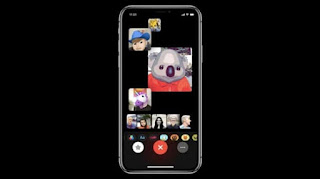which-batteries-is-tesla-using ?
Tesla uses lithium-ion battery cells in their electric vehicles. More specifically, they use:
• Nickel-cobalt-aluminum (NCA) battery cells:
Tesla's Model S, X and 3 vehicles use NCA lithium-ion battery cells. These cells use a nickel-cobalt-aluminum chemistry that offers higher energy density and therefore can store more energy in a smaller package. However, they tend to be more expensive than other lithium-ion cell types.
• Nickel-manganese-cobalt (NMC) battery cells:
Tesla's Model 3 Standard Range Plus and Standard Range vehicles use NMC battery cells. These cells have a nickel-manganese-cobalt chemistry that offers lower energy density but at a lower cost. They provide good balance between cost, power and performance.
Tesla primarily sources their battery cells from Panasonic, who manufactures the cells to Tesla's specification. However, Tesla is also developing their own "4680" battery cell in-house that promises to significantly improve vehicle range, charging speed and reduce costs. These cells are expected to debut in Tesla's Cybertruck.
In summary, Tesla currently uses a mix of NCA and NMC lithium-ion battery cells produced mostly by Panasonic. These cells utilize different chemistries that balance performance, energy density, costs and safety factors. However, Tesla's upcoming "4680" battery cells are expected to dramatically improve the range, power and economics of their electric vehicles.
Hope this summary helps explain which batteries Tesla currently uses in their EVs and the different cell types involved! Let me know if you have any other questions.
Tell me more.
Here are some additional details about the batteries Tesla uses:
Tesla's Current Battery Cells:
• NCA cells offer around 20% higher energy density, allowing them to store more power in a given volume. This enables larger batteries with longer ranges. However, NCA cells tend to degrade faster over time and are more expensive to produce. They require a voltage buffer to improve safety.
• NMC cells offer lower energy density but at a lower cost and with better safety. They degrade more slowly over time and can offer more charge cycles. However, NMC batteries need to be larger to provide the same range as NCA batteries.
• Tesla's Model S, X and Long Range Model 3 vehicles use NCA cells for their higher energy density and longer ranges.
• Model 3 Standard Range variants use NMC cells to reduce costs while still providing enough range for most drivers.que es vsync
Tesla's Upcoming 4680 Battery Cells:
• The 4680 cells use a larger format - 46 millimeters wide and 80 millimeters tall. This allows Tesla to improve energy density by up to 16% and reduce costs by more than 50%.
• Tesla claims the new cells can increase vehicle range by 54% due to their higher energy density and lower cost.
• The 4680 cells also support faster charging speeds and improved safety features.
• Tesla plans to start production of their 4680 cells in 2022 and deploy them in the Cybertruck and other future vehicles.
So in summary, Tesla's current batteries emphasize energy density and performance for longer range, while their 4680 cells aim to significantly improve vehicle range, charging, costs and safety through a larger cell format and manufacturing improvements. The 4680 cells represent a dramatic step forward for electric vehicle batteries.

No comments:
Post a Comment